In the energy efficiency room there can be found the panel of lighting demonstration, the meter panel, the consumption simulation model, the digital meter, the Ampere-hour meter developed by CEPEL, the consumption measurement appliances counter and the fuel cell.
10.1. Lighting demonstration panel
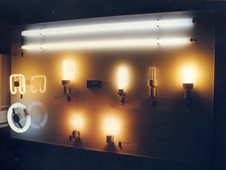
Lighting Panel
This panel is composed of various types of light bulbs and a power meter. When connected to a particular light bulb, the meter shows its consumption in Watts. With this panel you can compare the effect of lighting and the consumption of different light bulbs. A particularly interesting demonstration is the comparison of an incandescent bulb to a compact lamp of the same color temperature. With about 30% of consumption, the compact lamp has the same characteristics of the incandescent light, visually observed by the visitor.
10.2. Consumption simulation model
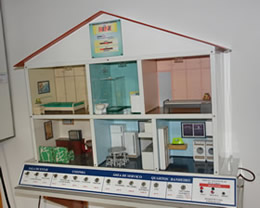
Consumption simulation module
This is a model of a house with several simulated appliances inside. Through switches, you can select which appliances will have a simulated operation. The total consumption of selected appliances is shown in a digital "display". By simulating, the visitor learns which equipment in their house consumes more energy.
10.3. Appliances consumption measurement counter

Appliances Consumption measurement counter
The appliance consumption measurement counter measures the demand for power (watts) and power consumption (Watt-hour) of electrical equipment and displays the values measured in two digital displays in real time. Through these measurements, the visitor can know the consumption of conventional appliances.
10.4. Fuel cell
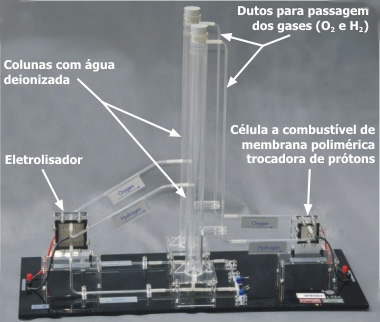
Demonstration with fuel cell and electrolyzer kit
Fuel cells are electrochemical devices that convert the variation of the free energy of an electrochemical reaction directly into electrical and thermal energy, not involving thermodynamic cycles of indirect conversion.
In the demonstration kit shown below, the hydrogen (H2) and the Oxygen (O2) are produced in the electrolyzer (by water electrolysis) – whose flow chart is shown in (1) – from deionized water and a source of electrical energy, such as photovoltaic modules shown in (2). The water stored in the columns is consumed in the electrolyzer, producing the gases H2 and O2 that pass through the same column , so as to stabilize the supply and to ensure the humidification of these gases, reaching the proton exchange polymeric membrane fuel cell – as for example, the ones demonstrated in (3) or (5), whose components are shown in (5) and (6) and the flow chart is depicted in (4), where these gases go through a series of electrochemical and diffusional processes – inside the fuel cell, as depicted in (7) and (8) – which result in the production of electrical energy and heat.
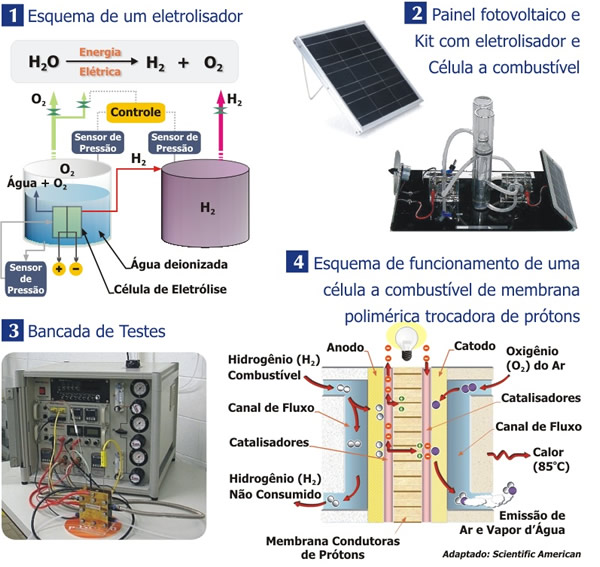
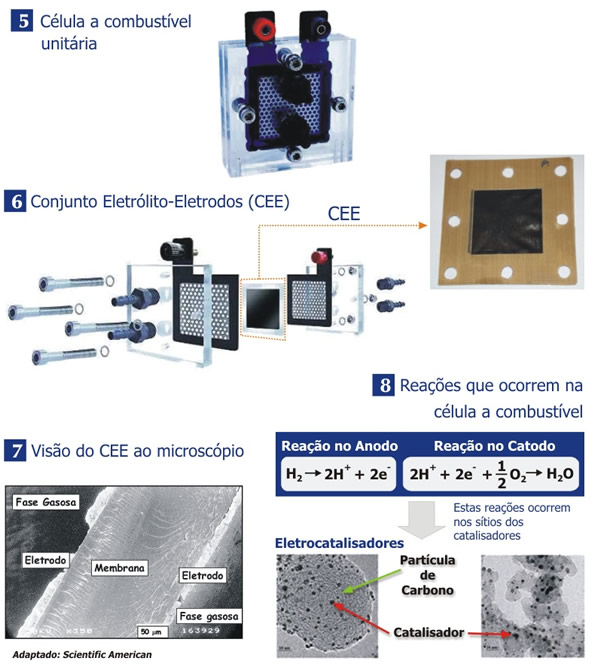
10.5. Meter panel

Meter panel
The meter panel provides the possibility of viewing the historical evolution of the electricity meters in Brazil since 1906.
10.6. CEPEL digital meter

This meter, developed at CEPEL, presents the possibility of measuring differentiated tariff rate depending on whether the time of consumption is located at peak or off-peak hours. The switching is remotely operated by the concessionaire. Construction features of the device make it virtually immune to common types of fraud.
10.7. Ampere-hour meter
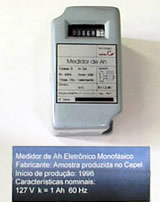
Also developed by CEPEL, this meter is a low cost meter for the use of low consumption consumers. It is not strictly a power meter, as it is sensitive only to the current. However, as the voltage presents low fluctuation, the results are on average very close to those which would be read with an energy meter, with the advantage of having a low cost. The device got a patent in the United States, which opens doors to the international market.